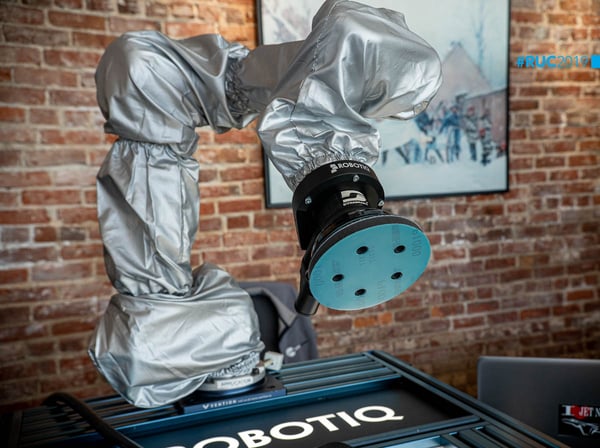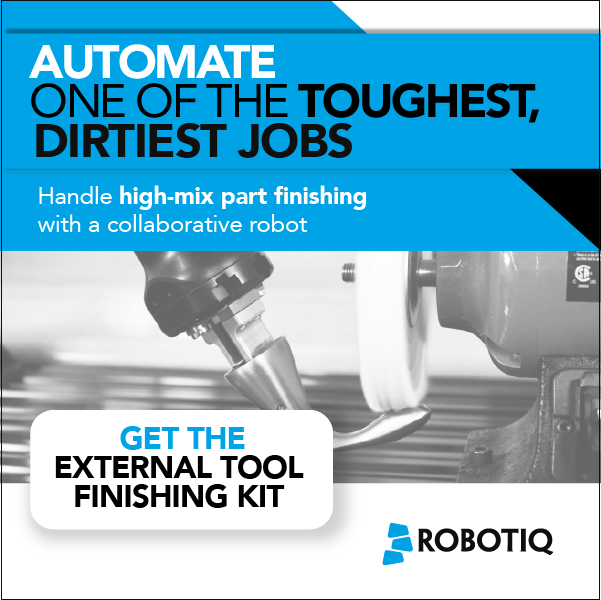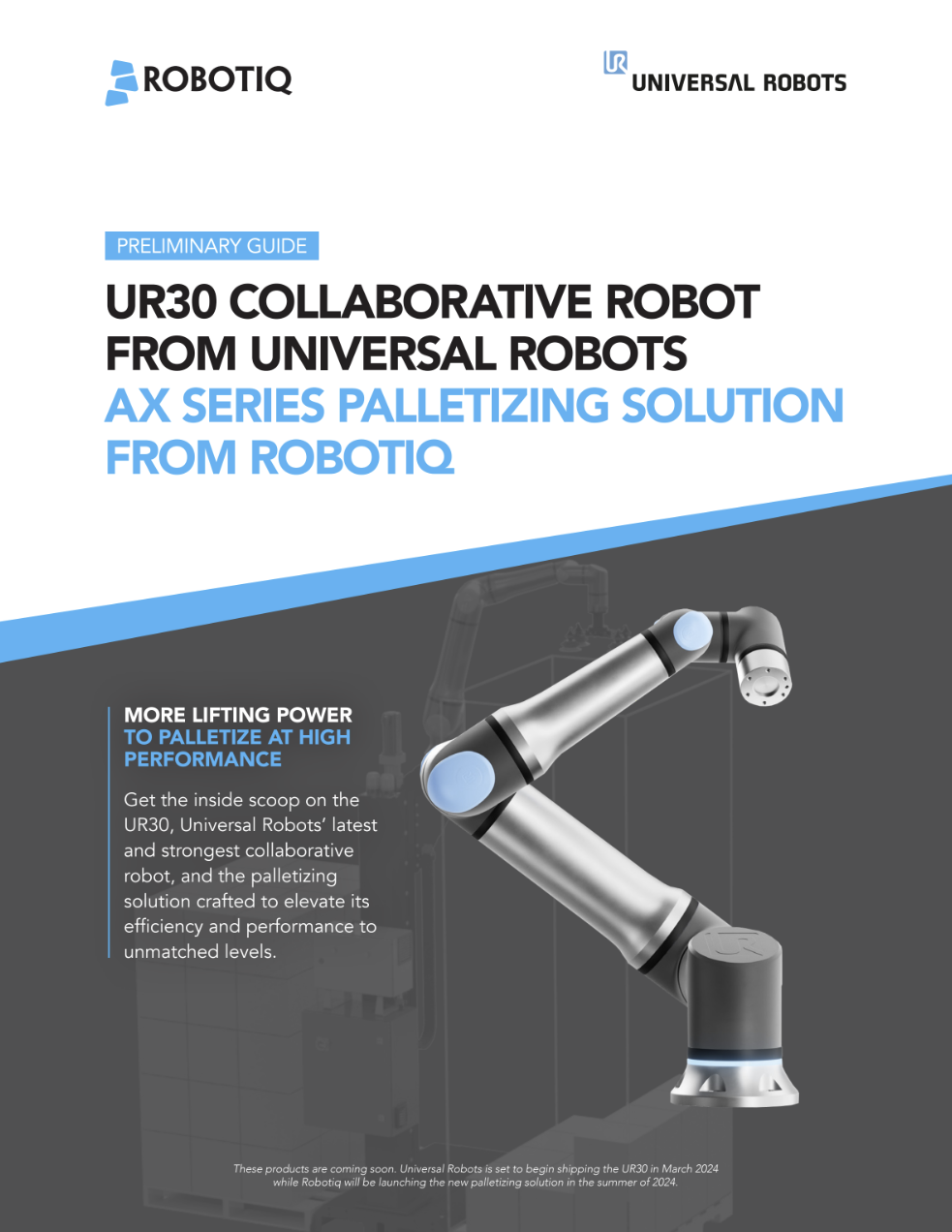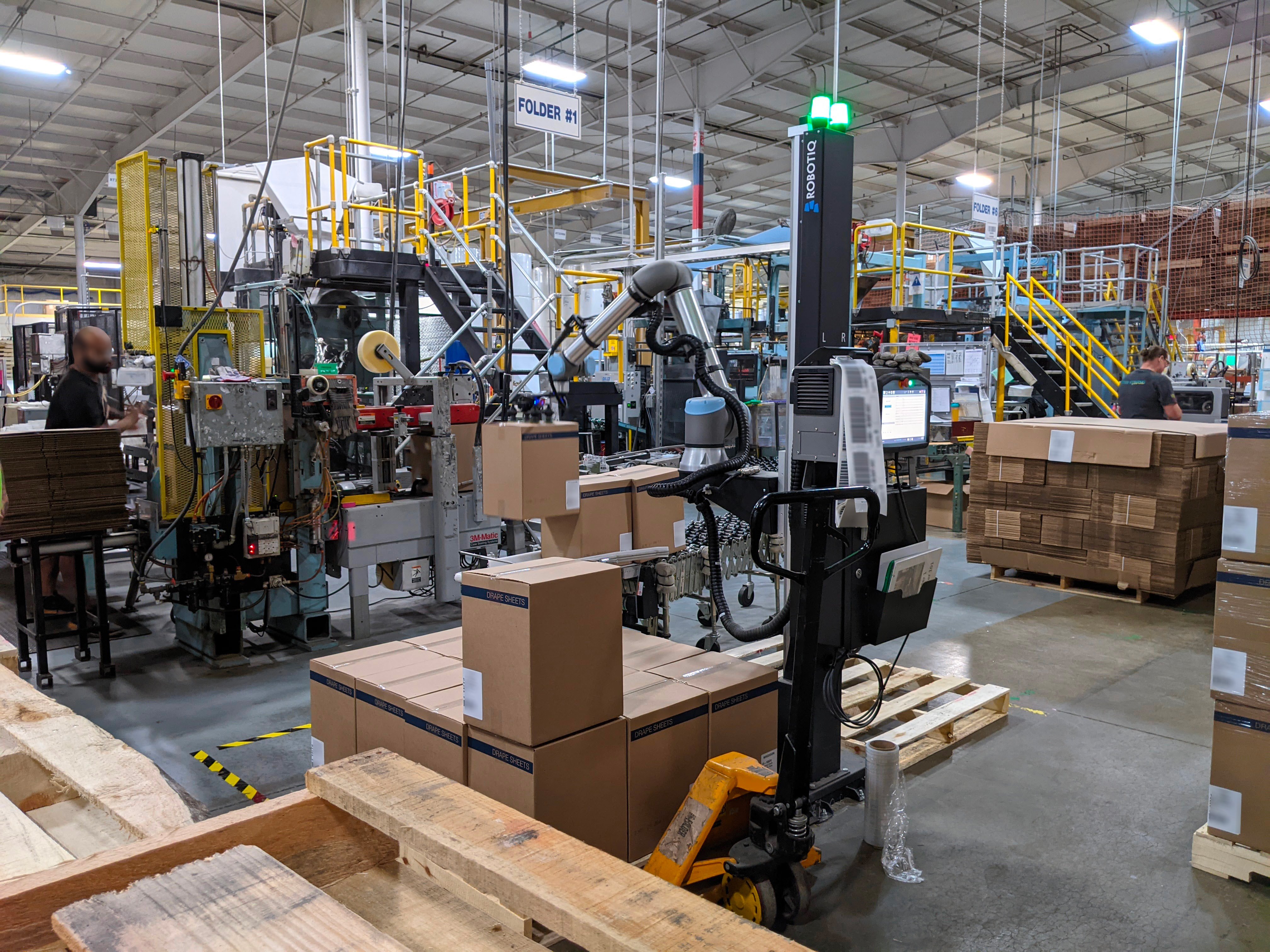The 10 Sustainability Benefits to Choosing Robot Finishing

Posted on Jan 09, 2020 11:02 AM. 5 min read time
Robotic finishing is more than just a good way to improve productivity. It can also improve the sustainability of your sanding and polishing tasks!
Sustainability is a bit of a buzz word these days, isn't it? Businesses all over the world are talking about how they can become more sustainable.
However, sustainability is not just a fad. It's a required aspect of modern business. There are many reasons that businesses need to improve their sustainability, including increased consumer demand, tax incentives, and new revenue opportunities.
Finishing tasks like sanding and polishing are a perfect candidate for robotic automation. A robot can solve many of the common problems that plague finishing workers, making their jobs more satisfying and improving product quality.
Robots can also help to improve the sustainability of sanding and polishing tasks.
Here are 10 sustainability benefits that you can get by picking robotic finishing instead of traditional manual finishing.
1. Efficient material removal
One of the top benefits of robotic finishing is that it improves the consistency of the sanding or polishing task. When programmed correctly — which is easy with the right solution — the robot will provide a consistent force onto the surface of the material throughout the entire finishing task. It will only finish those parts of the surface which need to be finished. This makes robotic finishing more efficient than manual finishing and therefore more sustainable.
2. Less waste
The abrasive media that you use for finishing tasks can be used up very quickly. This is particularly true with manual sanding and polishing. Even the most skilled human finishing workers can use up the finishing media in an inconsistent manner, leading to waste which could be avoided.
Robots can reduce this wastage to a minimum. Also, it is then possible to tweak and update the robot's programming to incrementally improve the efficiency of the finishing task and further reduce the waste.
3. Reduced tool wear
Tool wear is probably the main cause of waste in finishing tasks. Some amount of wear is necessary for the task — as the tool wears down, so does the surface of the workpiece. However, if you can adjust the finishing operation to accommodate this change, you can reduce the tool wear even further.
The Contact Offset feature in the new version of our Finishing Copilot allows your finishing robot to automatically adjust its operation to accommodate tool wear.
4. Longer tool life
A robot which can adjust its operation to accommodate tool wear will extend the life of the tool compared to a robot which cannot perform this function. Longer tool life improves the sustainability of the business in multiple ways. Firstly, as mentioned above, it reduces the amount of unnecessary waste. Secondly, it helps to reduce the 20% of downtime that is attributed to tool failures.
Various researchers have investigated the sustainability of manufacturing and tool life is usually a key factor.
5. Better use of workforce
As is the case with other robotic tasks, robotic finishing allows you to move your finishing workers away from the tedious, repetitive finishing tasks and onto to more value-added tasks. This makes better use of their skills and capabilities.
People often worry that robots replace people, but the evidence doesn't bear this out. According to one study, engineering jobs are at minimal risk from automation and robots actually improve the sustainability of jobs by creating new jobs which are no mindless and repetitive.
6. Increased health and wellbeing
Although it might not look it at first, finishing can be a dangerous job. The repetitive movements of sanding and polishing can soon translate into debilitating musculoskeletal disorders. Then there is the health risk posed by dust inhalation and potential hearing damage caused by noisy tools.
One study listed 7 different health risks to using power tools, some of which are very debilitating. These could be avoided by using robot finishing instead of traditional finishing, making the tasks more sustainable.
7. Improved energy use
Energy usage is one of the pillars of sustainability. Reducing the energy that your business uses will reduce the impact that your operations will have on the environment. It can also reduce running costs, which is usually a good thing.
Robots are a great way to reduce energy use. When programmed to move efficiently, a robot will only use energy for the movements that it actually needs to make. One study showed that you can also reduce energy usage by scheduling them to run at times where energy usage is at its lowest.
8. Reduced emissions
Reducing harmful emissions (e.g. of greenhouse gasses) is a vital way of reducing the impact of our businesses on the environment.
According to the International Institute for Sustainable Development, "many emerging technologies offer the potential to reduce emissions." This includes advanced industrial robots which, in the best case, can have a positive impact both on emissions and on the use of natural resources. Although finishing robots don't guarantee your business will be more sustainable in and of themselves, they can certainly help reduce your environmental impact when used correctly.
9. Shorter shipping distances
Shipping can have a huge negative impact on the sustainability of a business's operations. Although shipping by boat is considered to be the most efficient way to transport goods, it is undeniable that local production is more sustainable than shipping your products all the way around the world.
Robotic finishing is one tool that can help you to bring your production "back home" and reduce the environmental impact of shipping to a minimum.
10. More innovation options
We need to be innovative if we are going to improve the sustainability of our businesses in the long term. The more options that you have available to help you with this, the easier it will be for you to improve the sustainability of your entire operation.
Robot finishing can help to improve your sustainability both on a small scale (e.g by improving the job satisfaction and health of individual workers) and on a large scale (e.g. by reducing shipping emissions).
Which of these benefits is most interesting to you? Tell us in the comments below or join the discussion on LinkedIn, Twitter, Facebook or the DoF professional robotics community.










Leave a comment